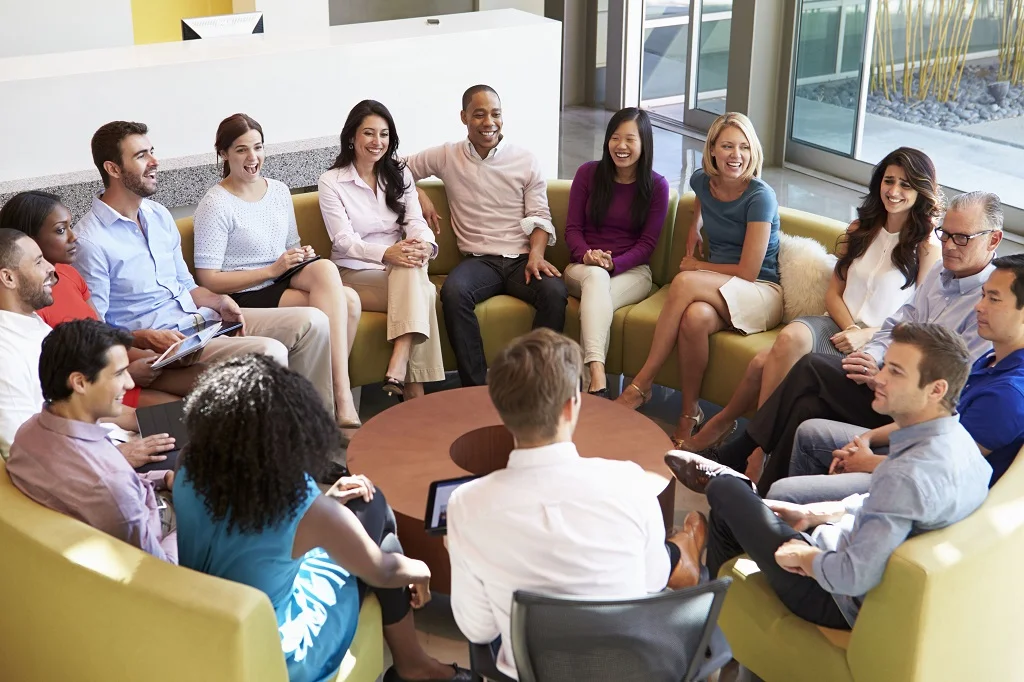The conversation about free-addressing proved to be the meatiest, with some designers seeing it as a much-needed means of democratizing the workplace and more accurately reflecting the way business is conducted today.
Slowly but surely, working at home is becoming more common
How To Design Workplaces For Humans, Not Generations
Companies are making major real estate and policy decisions based on what they think Millennials want, with the sole purpose of recruiting and retaining the best possible talent.
This Is Your Permission Slip, Go Work Outdoors
Employers still have huge reservations about permitting more flexible working
Employers considering new flexible working options for their employees are concerned about the security and management implications, according to a recent poll, despite the fact that staff now have the legal right to request flexible arrangements.
Can the modern office work for both introverts and extroverts?
In today’s office, desk dividers have come down. Bosses sit among their employees. Meeting rooms have glass walls.
You should not expect the coworking bubble to burst anytime soon
Workplace Agility: The Newest Tool for Occupiers and Investors
Traditional leases alone aren’t enough to serve today’s corporate occupiers, say the folks of CBRE. Agility in its approach to space serves the tenant (and their employees) best--which means it serves the landlord as well.
The Heat of the Matter Behind Design for Thermal Comfort
Hospitality Meets Office: Building Community Builds Retention
It’s all about customer experience in the office environment today. What’s more, you needn’t break the bank to provide it and keep your occupants happy.
Gen Z is coming to Your Office. Get Ready to Adapt.
The generation now entering the workforce is sober, industrious and driven by money. They are also socially awkward and timid about taking the reins.
CEOs Talk Workplace - Interview with Steelcase's Jim Keane
Find out how Steelcase CEO, Jim Keane, has transformed the culture of the global organization by utilizing their space as an engagement tool.
Creating a productive workplace for people is all about context
The quest for a proper understanding of the links between the places we work, the things with which we fill them and our wellbeing and productivity has been ongoing for a very long time.
CRE Opinion: An Obituary For The Desk
Your open office might make you more active and less stressed
A study found that workers in open offices (where there are no partitions between desks, or the partitions are low enough to see over while seated) were over 30% more active while at the office than people working in private offices, on average.
Can the office be put to use 24 hours a day?
Most offices are left empty overnight, but is there a way to put these spaces to productive use, even as the main workforce is elsewhere. Steve Lang is a director in Savills commercial research team, and he has an answer.
How breakout spaces became the most important areas in the office
No longer just a restful oasis, breakout spaces now need seating that can work for both relaxation and work zones.
Quality coffee tops the list as the most important office feature
The quality of the coffee is the most important feature for office occupants, with two thirds of workers saying a decent flat white or cappuccino is an essential for a productive and engaged workforce.
Creating Collaborative Culture Through Office Design
The drab office designs of the 1980s and 1990s continue to infect the modern office of today, turning off millenials and hurting worker productivity in the process.
New Corporate-Office Design: No Ping-Pong, But Not Uptight
Today’s standout workplaces, as evidenced by this Manhattan financial-services office, combine the best of conservative culture and startup loosey-goosiness.

























